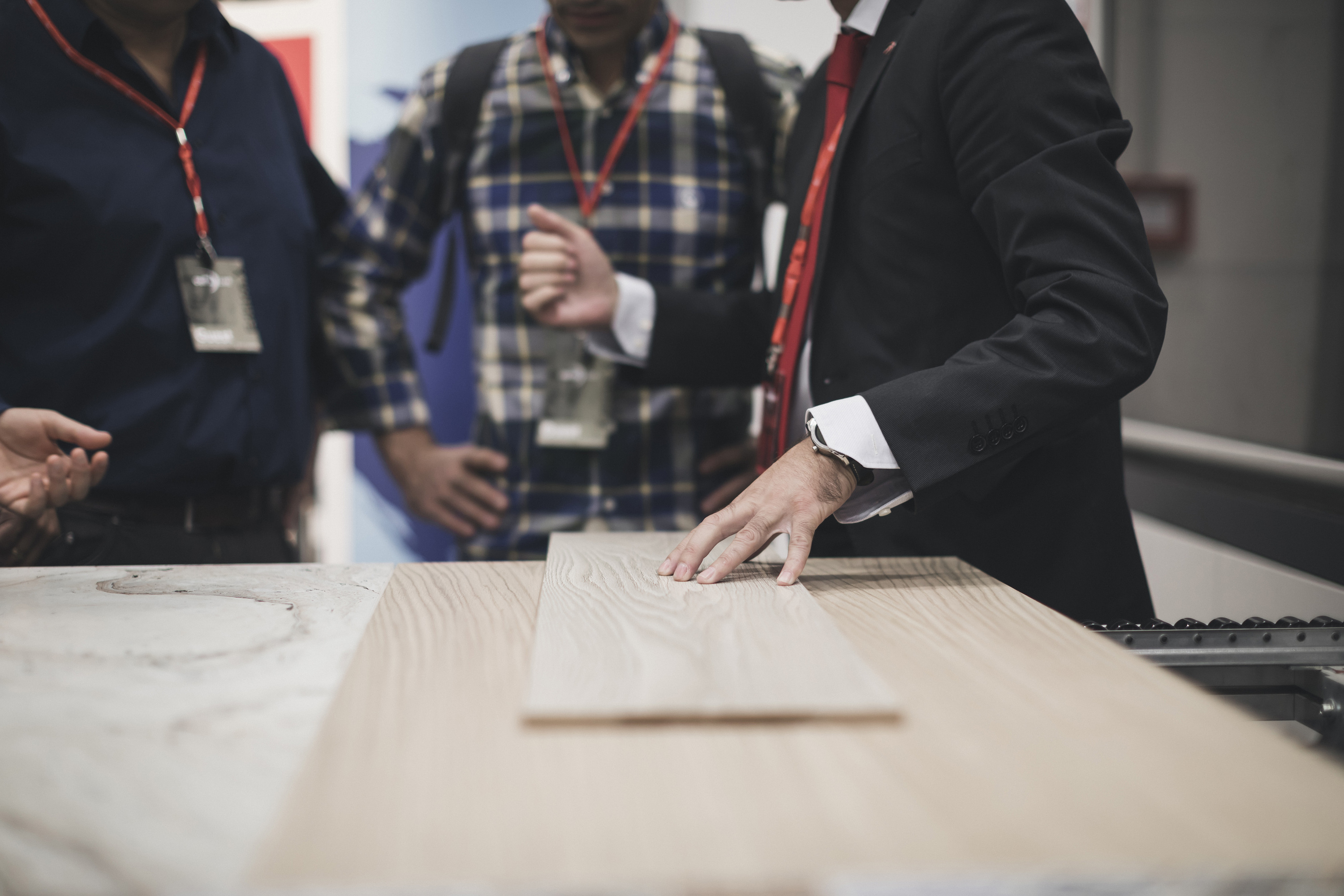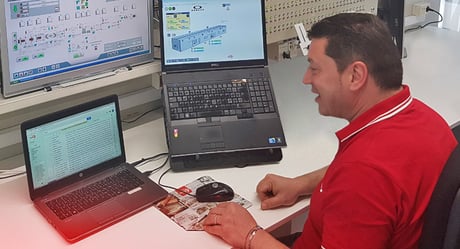trends
What are the trends for finishes in the building sector?
Before diving deeper into the features of the best-performing finishing solutions for this sector, let’s take a look at how the market is evolving, where finishing and coating in construction play an increasingly central role.
We are looking at a market in which companies must meet growing demands for customisation and small batch production, implying a stronger focus on flexible and efficient finishing lines. There is also a growing need to improve the surface performance of manufactured products, ensuring durability and aesthetic value over time.
At the same time, finishing for the construction sector must guarantee long-term durability and value. This is why, in addition to aesthetic appearance, manufacturers are focusing on enhancing performance against external agents. This includes the development of construction coatings capable of withstanding extreme weather conditions (for external components) and protective layers with special properties – stain-resistant, scratch-resistant or ultra-durable (for interior elements).
In construction, examples abound, ranging from innovative solutions for coating steel to glass coating and finishing for fibre cement.
Coating machinery for the construction sector: innovation in architectural finishing
Next-generation coating solutions and equipment play a key role in improving the efficiency and quality of architectural finishes. Automation and the integration of cutting-edge technologies have redefined traditional construction processes, enabling precise execution and consistent results that were previously unattainable.
Modern equipment optimises workflows by reducing manual labour and the error rate inherent in human activity, ensuring each manufactured item meets the highest quality standards.
This technological progress not only accelerates project timelines but also serves as a critical success factor in reducing waste, making the value chain on which the construction sector is based increasingly sustainable.
Moreover, the use of advanced solutions effectively expands the range of possibilities, opening up new scenarios and opportunities for operators in the sector, such as transforming concrete into decorative flooring – a concrete example of how simple materials can gain prestige through finishing.
The benefits of using automated machines and systems for building finishing
Integrating automated construction machinery, supported by software and IoT technologies, has the potential to literally revolutionise finishing in the construction sector. Thanks to sensors, machine-to-machine communication systems and real-time data analysis platforms, these systems allow for high-quality finishes on different materials, optimising various processing procedures – from wood to metal, fibre cement, glass and stone surfaces – while reducing waste in every application and increasing process sustainability.
Whenever builders or architects wish to implement complex shapes, they can rely on our solutions' ability to handle even the most intricate finishes.
In short, the new technologies applied to construction machinery and coating in construction offer four main advantages:
• Greater precision and uniformity, also due to a reduced human error margin.
• Reduction in manual labour, leading to significant time and cost savings.
• High-quality finishes with minimal waste, making the process even more sustainable.
• Increased productivity and efficiency, which can become critical success factors when it comes to winning new customers and contracts.

Coating in the construction industry: advanced techniques and equipment
Let’s briefly explore some of the finishing methods currently used in the construction sector. Spray coating is renowned for its flexibility and ability to cover large areas with a uniform paint layer, making it ideal for various surfaces. Roller coating on the other hand, offers speed and product savings and is perfect for flat surfaces. Vacuum coating solutions, which like roller technology provide speed and savings, can also apply coating on all sides of the product: top surface, underside and edges.
Coating equipment in the building industry: choosing the right tools
When it comes to achieving a flawless finish in construction coating, choosing the right tools is crucial. The range of equipment, from spray coaters to roller machines and drying systems, is extremely varied. Each type of product offers its own features and performance characteristics, which will have a significant impact on the quality of the final result.
When comparing automatic spray machines, for example, it’s important to consider the priorities of the line to be set up, evaluating the models available based on adjustable spray systems, ease of cleaning, and solutions that improve efficiency and versatility. Investing in appropriate drying systems is essential to accelerate processing times and ensure finish quality and effectiveness.
By carefully assessing all of these tools’ features, professionals can develop integrated and consistent applications that meet industry standards and customer expectations.
Finishing technologies for construction: why choose Cefla
When forming partnerships with manufacturers of architectural components – whether for interior or exterior settings – the leading players in the construction industry prefer those who systematically focus on using advanced finishing technologies. Technologies like those developed by Cefla Finishing, whose integrated offering enables the adoption of cutting-edge coating solutions and machinery, even in existing production lines, making them more efficient. Backed by consultancy services based on proven specialised expertise, Cefla Finishing can also support any type of organisation throughout the innovation journey, covering every stage of the process to ensure quality finishes across a wide range of applications.
Finishing technology applications for the building industry
Technologies
Application fields
Below are some construction industry specific application areas and finished products
APPLICATIONS

Flat roof tiles and slates

Suspended ceilings

External wall covering

Porcelain stoneware

Panels

Wall coverings

Ceramic panels

Profiles and structural metalwork
Discover some of the machines needed for finishes in the construction industry
machines
Case studies
Case study
WHITEPAPER
Industrial digital printing has unlimited potential
Discover all the potential effects that you can obtain on different substrates thanks to digital printing.
Download the White Paper
Learn More
MAGAZINE
For sixty years we have been innovators in the field of surface finishes.
We have already helped dozens of construction companies. We make our know-how available to you, to help you explore the latest finishing technologies for products used in the building industry.
Feel free to contact us to visit our 3000 sq.m laboratory and test your own components on our equipment.

Connect
Frequently Asked Questions
Frequently Asked Questions
High flexibility in terms of output rate and choice of cycles/processes according to the line make-up.
Zero solvent emissions thanks to 95% use of products with high dry residue (UV) content.
Possibility of using the roller technique for any application on all flat surfaces.














